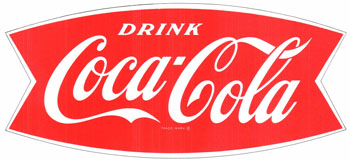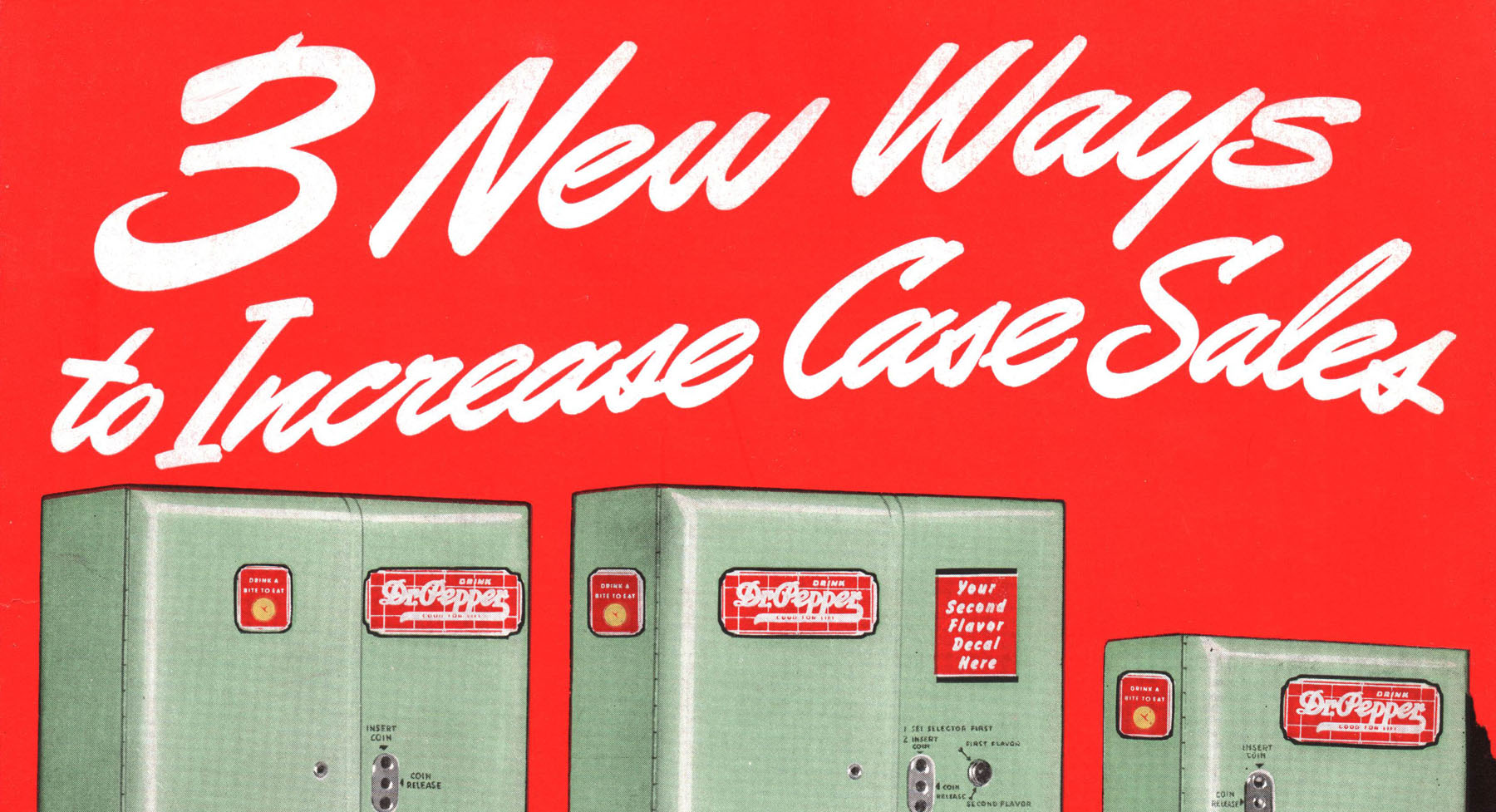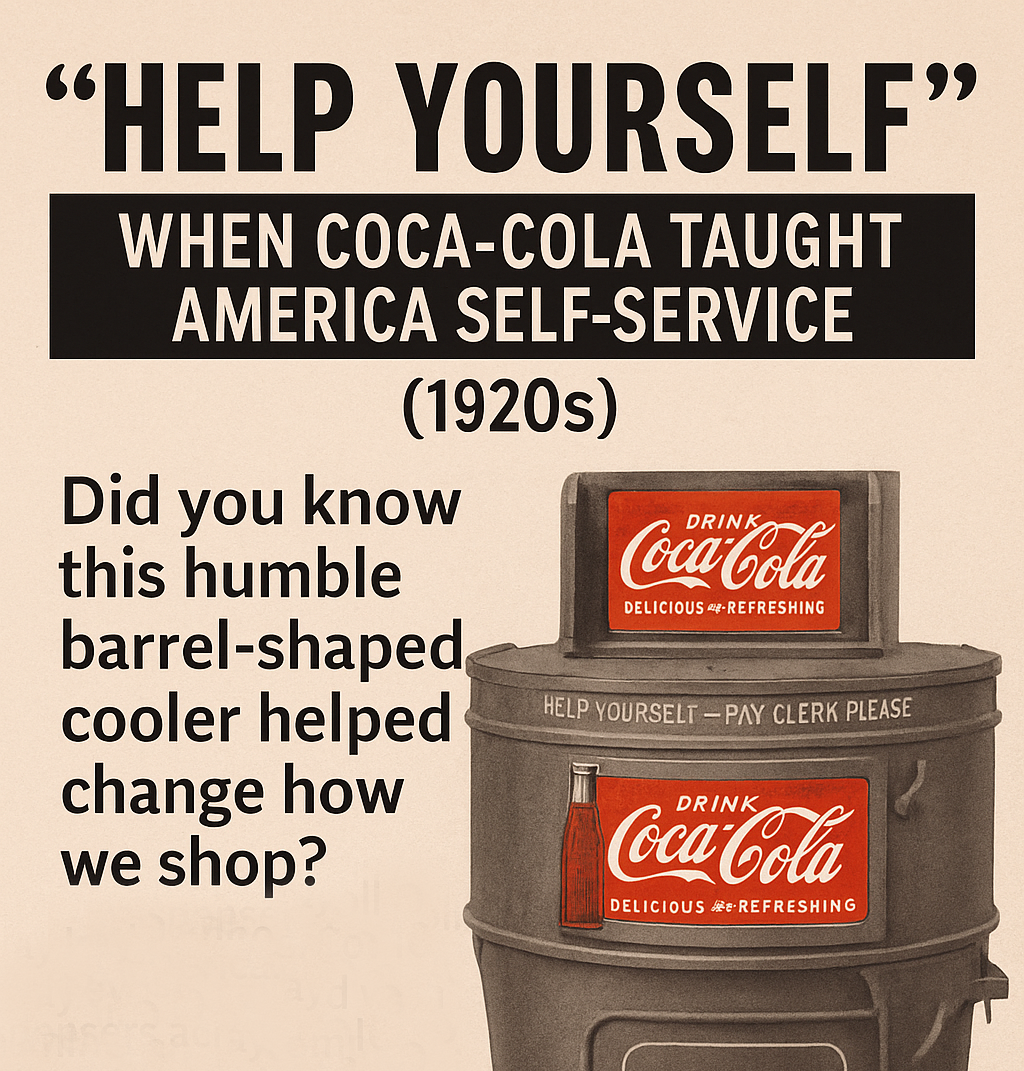The Story of Coca-Cola’s 2-Liter Bonus Bottle: A 1970s Marketing Revolution
Discover the history of Coca-Cola’s iconic 2-liter Bonus Bottle campaign from the late 1970s. Learn how this bold marketing strategy changed beverage packaging forever and explore the point-of-sale (POS) materials that brought it to life in grocery stores across America. As part of this campaign, the Coca-Cola 2 liter bottle became a symbol of consumer value.
Table of Contents
The Spark of Innovation
The introduction of the Coca-Cola 2 liter bottle marked a significant shift in beverage packaging.
In 1979, America was in transition. The vibrant optimism of the early 1970s had given way to economic challenges, energy crises, and shifting consumer priorities. Amidst these changes, Coca-Cola prepared to launch one of its most ambitious innovations yet: the 2-liter glass Bonus Bottle.
Shoppers quickly recognized the benefits of the Coca-Cola 2 liter bottle for family gatherings.It offered a practical solution for families, making the coca-cola 2 liter bottle a staple in homes.

It became synonymous with festive gatherings, where the Coca-Cola 2 liter bottle was often the drink of choice.
By the late 1970s, Coca-Cola had been a household name for nearly a century, but the beverage industry was evolving. Competitors like Pepsi were advancing with campaigns such as the “Pepsi Generation,” while private-label sodas chipped away at Coca-Cola’s market share with aggressive pricing.
The coca-cola 2 liter bottle quickly became a favorite for parties and events.
People loved the Coca-Cola 2 liter bottle for its affordability and convenience.
Consumers were also seeking more convenience and value, larger packages for family use, bulk savings, and products designed for a home-centered lifestyle. Coca-Cola needed a marketing strategy that could address these needs and cement its position as the market leader.
The solution was the 2-liter glass bottle, unprecedented in size for soft drinks. Heavy and substantial, it offered 5% more soda than the popular 64-ounce size for the same price, appealing to value-conscious shoppers.
The Marketing Campaign
The Coca-Cola 2 Liter Bottle: A Game Changer in Beverage Packaging
To introduce the Bonus Bottle, Coca-Cola launched a bold point-of-sale (POS) marketing campaign under the slogan “Think Bigger.”
This was not just an advertising effort aimed at consumers; it was a comprehensive merchandising strategy for retailers. Coca-Cola provided an array of promotional materials to transform store displays into attention-grabbing marketing zones:
- Shelf Talkers – Eye-catching signs for grocery shelves.
- Neck Ringers – Promotional tags placed around bottle necks.
- Canopy Insert Cards – Visuals for coolers and aisles.
- Display Sheets – Posters and banners encouraging multi-bottle purchases.
Each item carried catalog codes like W478 (shelf talker), W479 (canopy insert), and W786 (the iconic “MORE FOR YOU!” signage).
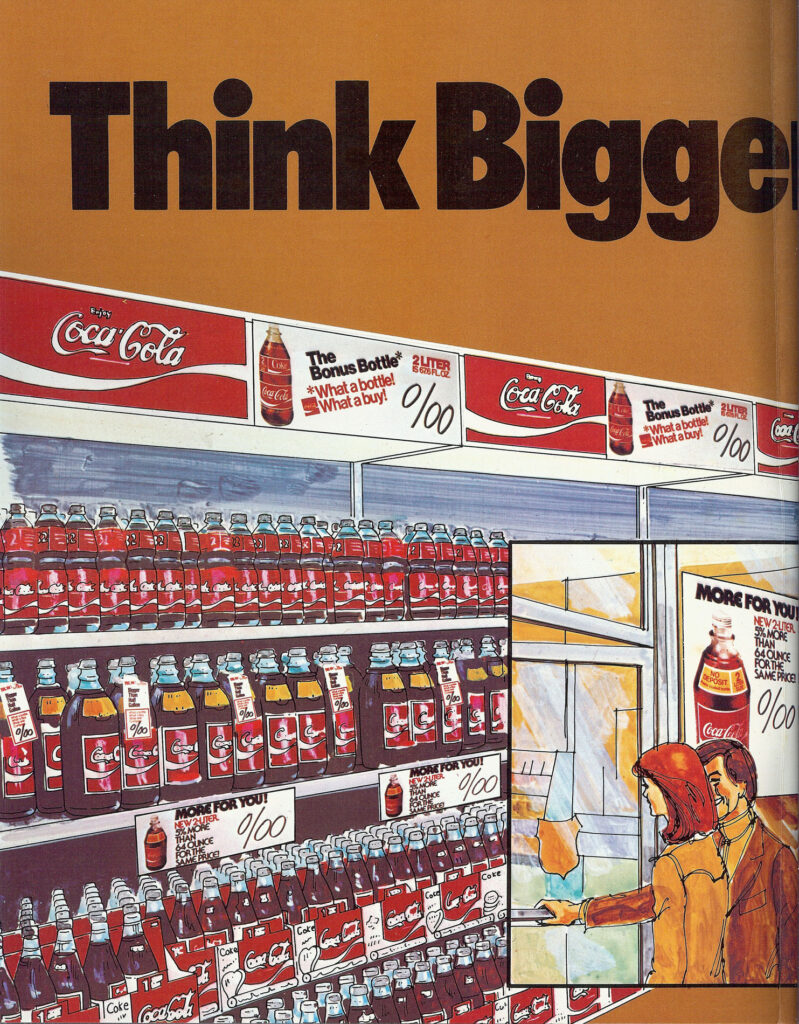
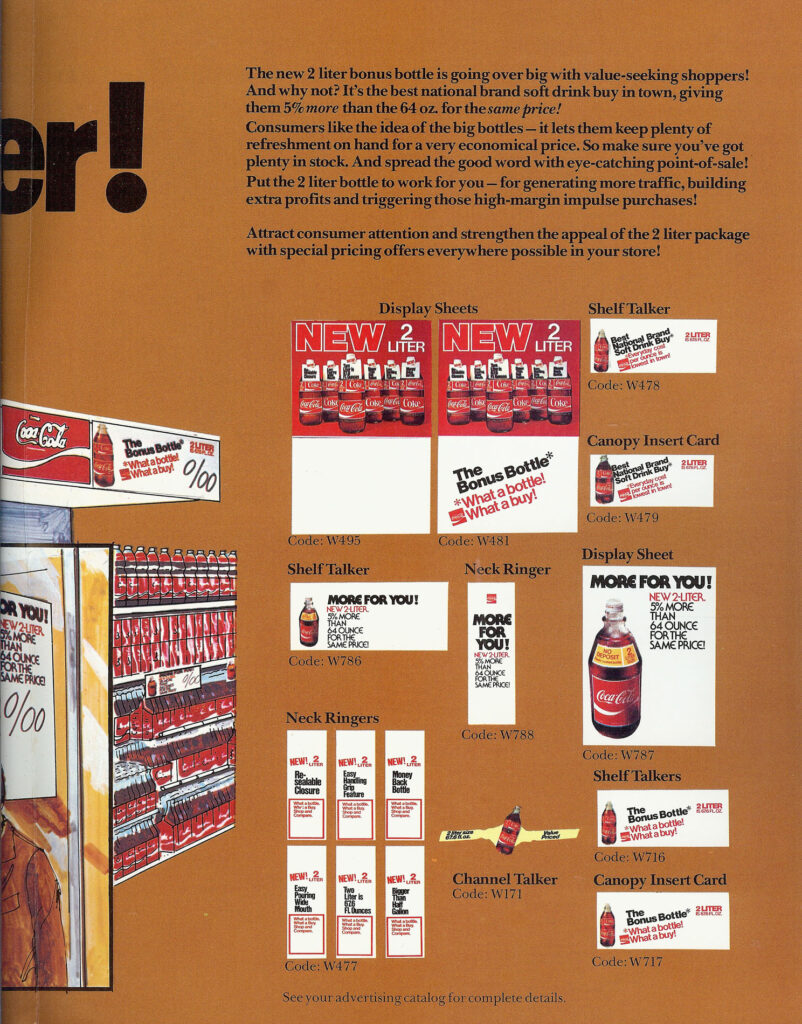
Today, the Coca-Cola 2 liter bottle remains a nostalgic reminder of the past.
The messaging was designed to resonate with shoppers:
“The Bonus Bottle. What a bottle! What a buy!”
“More for you! New 2 Liter—5% more than 64 oz. for the same price!”
Supermarkets across North America were encouraged to create bold, high-visibility displays of 2-liter glass Coca-Cola bottles, ensuring the Bonus Bottle was impossible to overlook.
The Grocery Store Revolution
As the campaign rolled out, the 2-liter Coca-Cola bottles began appearing in aisles from coast to coast. They were stacked under large “Think Bigger” banners, creating a striking visual presence.
The bottles themselves were distinctive. Made of thick, returnable glass, each one featured an embossed message around its neck: “RETURN FOR DEPOSIT.” The substantial weight and cool surface gave the impression of quality and abundance.
This packaging wasn’t merely functional; it became a symbol of value and family togetherness during a period of rising grocery bills and cultural shifts toward bulk purchasing.
The POS advertising materials reinforced Coca-Cola’s branding at every shopper touch point, from store entrances to checkout lanes.
Cultural Shifts in Beverage Marketing
The appeal of the Coca-Cola 2 liter bottle transcended generations, remaining popular among new consumers.
As trends shifted, the Coca-Cola 2 liter bottle still held its ground as a consumer favorite.
It continues to represent value in the beverage market, the Coca-Cola 2 liter bottle is still recognized for its size and affordability.
The Bonus Bottle campaign wasn’t just a marketing triumph; it reflected broader changes in American consumer habits. The preference for larger sizes paralleled trends in other consumer goods as families sought to stretch budgets and reduce shopping frequency.
However, while the 2-liter glass bottle succeeded in creating impact, it also revealed challenges. Its weight and fragility complicated transportation and storage. By 1982–1983, Coca-Cola and competitors began transitioning to lighter, unbreakable PET plastic bottles, signaling another packaging revolution.
Despite its relatively short lifespan, the glass 2-liter left a strong impression. Its hefty, the sound of glass clinking in shopping carts, and the ritual of twisting open its cap became part of household memories.
The Legacy of Coca-Cola’s “Think Bigger” Campaign
Ultimately, the Coca-Cola 2 liter bottle has left an indelible mark on beverage history.
As we reflect on its legacy, the Coca-Cola 2 liter bottle will always be part of our collective memories.
Today, the “Think Bigger” campaign is remembered as a pivotal moment in Coca-Cola’s history. It showcased the company’s ability to innovate both in product packaging and retail merchandising.
Collectors prize original POS materials from the campaign, shelf talkers, neck ringers, and banners, as artifacts of a bygone era. These items reflect the design language of the late 1970s, with bold sans-serif fonts, warm earthy colors, and hand-drawn illustrations of bustling grocery aisles.
The Bonus Bottle also represents a time when glass dominated the beverage industry, just before plastic transformed into how the world consumed soft drinks.
A Snapshot in Coca-Cola History
The 2-liter Bonus Bottle and its accompanying POS marketing materials stand as snapshots of a cultural and commercial moment. They represent not just a new package size but a strategic response to a changing world.
In retrospect, the campaign’s success lies in its simplicity and boldness, proof that even a century-old brand could “Think Bigger” and redefine its place in the market.
